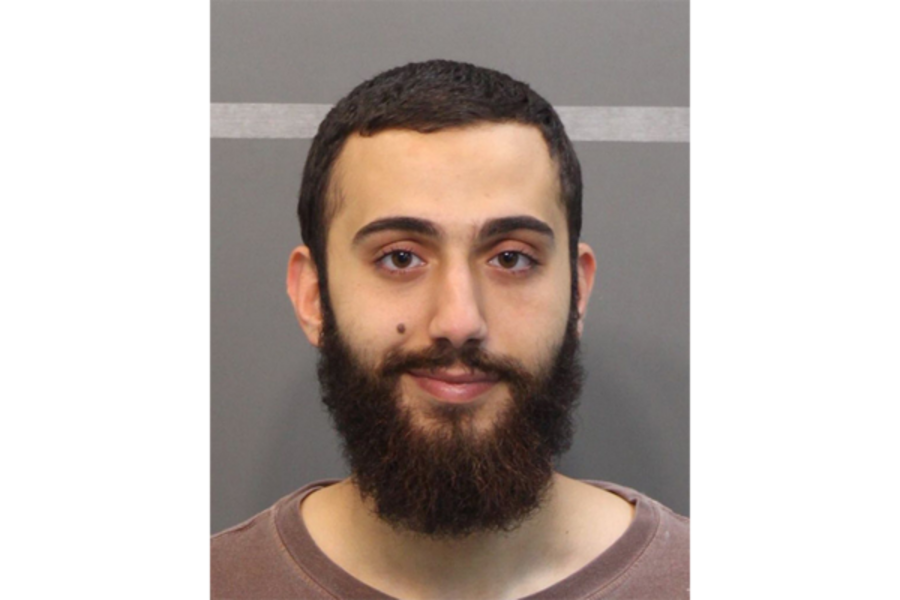Does Chattanooga shooter fit the 'lone wolf' terrorist pattern?
Loading...
| New York
In the digital age, there is no question that social media has extended the reach of groups like Islamic State and made it easier for disaffected individuals to not only become radicalized but research terrorist tools and tactics. But the “lone wolf,” homegrown terrorist emerged as a particular American threat long before 9/11 – even before Theodore Kaczynski began his campaign as the Unabomber in 1978, experts say.
The use of the word terrorism today often grips Americans with images of radical Islam – foreign “others” motivated by virulent anti-American jihadism. But incidents such as Thursday’s shooting also may be rooted in cultural factors closer to home, some experts believe, whether or not those factors turn out to have been exploited by an outside terrorist group.
On Thursday, driving an open-top Ford Mustang, Muhammad Youssef Abdulazeez drove to a strip mall, opening fire on a military recruiting center, authorities said. He then drove a few miles away to a Naval Reserve Center, shooting and killing four US Marines and wounding three other people before he was killed in a firefight with police.
“This is really such a distinct part of American culture, saying the individual has to go out and do things on their own,” says Donald Haider-Markel, professor and chair of the political science department at the University of Kansas. “ ‘It’s up to me to take this on my shoulders.’ And that is specifically very American. Other cultures don’t individualize things quite so much.”
Federal investigators immediately considered Mr. Abdulazeez a potential domestic terrorist, US Attorney William Killian said on Thursday. And investigators on Friday said they were trying to determine whether the 24-year-old had any contacts with extremist groups during a seven-month trip to Jordan last year, as well during other travels to the Middle East.
The attack on the US military put the country’s national security networks on high alert, US Attorney General Loretta Lynch said, and prompted police departments in New York and elsewhere to guard local military recruiting centers, not taking a chance in case Thursday’s shooting was part of a larger coordinated attack.
Those who knew him said Abdulazeez – who grew up in the suburbs of Chattanooga, Tenn., in a subdivision called Colonial Shores – appeared to be an all-American boy, a lean high-school wrestler, good-looking and polite, according to reports. And though he appears to have been motivated by a radical jihadist faith, he also joins the ranks of mass shooters so familiar to the country.
There have been 281 mass killings in the US over the past decade, including 213 fatal shootings of four or more people since 2006. Other developed countries, of course, have experienced mass violence, such as the 2013 attack in Norway by Anders Brivik that killed 77 people, or the Charlie Hebdo attack in Paris this year, which was carried out by a terrorist cell. But the United States continues to experience mass violence on a scale not seen in most developed countries, experts say, making the culturally-laden term “terrorism” a more murky and politically-charged threat.
Acts deemed terrorism often grip the attention and collective fears of Americans in a unique way, experts say, and the association with radical Islam often puts a negative focus on American Muslims, a minority immigrant group that is, as a group, solidly professional and middle class.
“Terrorism is always a politically loaded word,” said Michael German, a former FBI agent who went undercover to investigate white supremacist groups, to Voice of America. “It's very important that there's consistency with that across the various ideologies because otherwise it looks discriminatory, that violence by minorities is treated more seriously than violence against minorities.”
Indeed, the same day Abdulazeez went on his rampage, a South Carolina judge set the date for the murder trial of Dylann Roof, a young white supremacist who shot and killed nine members of a historic black church in Charleston exactly one month ago. A Colorado jury on Thursday, too, found James Holmes, who shot and killed 12 people in an Aurora theater in 2012, guilty of murder.
Last month, many insisted that Mr. Roof be considered a terrorist, given that he was influenced by a murderous ideology, and that his killings may have been an attempt to make a “lone wolf” political statement. Federal investigators are still investigating whether to charge him with being a terrorist, or whether his murders constituted a hate crime.
“It’s sort of an American double standard, and that partly has to do with religion, but it’s also partly what’s in our consciousness,” says Professor Haider-Markel. “Generally speaking, most people aren’t paying attention to most acts of terrorism in the country, most of which at this time are by right wing groups.”
Since the terror attacks in 2001, at least 48 people have been killed by domestic extremists, says a study released in June by the Washington-based research center New America. By contrast, there were 26 deaths from jihadist attacks during that time. That total does not include the four Marines killed Thursday.
Haider-Markel notes that most of the attacks were perpetrated by individuals acting alone.
“What’s deemed as lone wolf terrorism is not unique to the United States, but we see more of this kind of terrorism, by lots of groups, than any other more organized kind,” he says.








